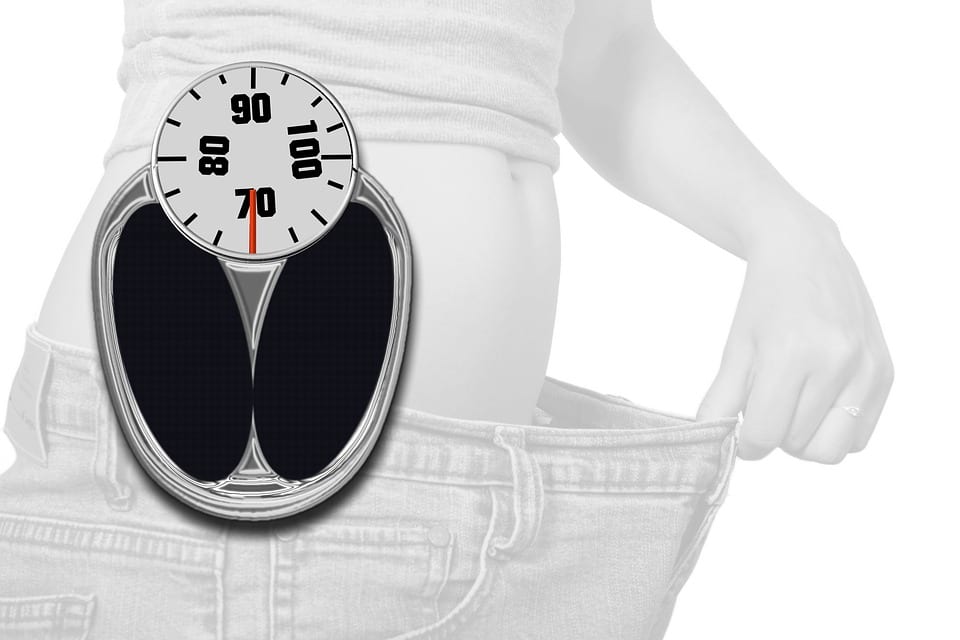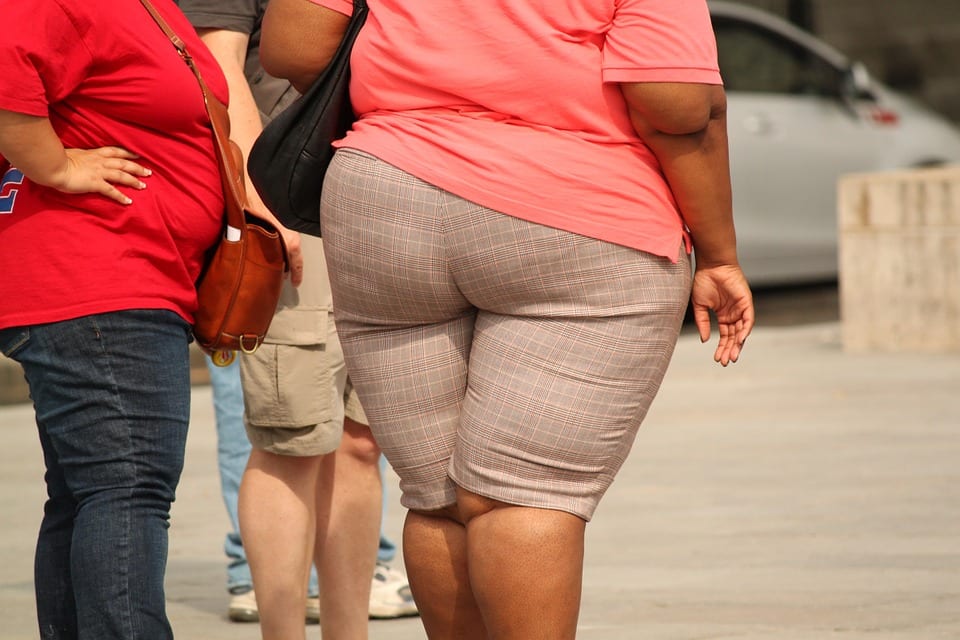Weight loss journeys are as unique as the individuals undertaking them, with countless approaches and unexpected revelations. Here are ten fascinating facts about the process and history of shedding those extra pounds. 1. The Pioneer of High-Protein Diets William Banting, a 19th-century undertaker, laid the foundation for high protein/low carb diets in 1864 with his … Continue reading From Bizarre Diets to Lifestyle Shifts: 10 Facts About Weight Loss
Take a Look at These Before-And-After Weight Gain Photos That Women Posted
Not everybody is skinny. I’d even say that most people are on the heftier side of the scale and there’s nothing wrong with that.
Not at all, actually!
A whole bunch of women took to Twitter to show off their weight gain and they look absolutely fabulous.
And I think you’re going to agree with me after you look at their photos.
Let’s check them out!
1. Grown woman weight.
And looking great!
Grown woman weight thread? 130
230 drop your pics!
(Reposting this thread because ppl were mad I deleted it lol) pic.twitter.com/6RBFJh9ux5— Tay (@tayyrainn) March 26, 2020
2. What a beauty.
She looks amazing.
97
140
pic.twitter.com/YUHtmsO9Eu
— em (@Emmie_X33) March 26, 2020
3. Twenty years later.
Rockin’ it!
115
185
HS Prom (1999)20 Year HS Reunion Prom (2019)
Age 18Age 38 pic.twitter.com/055hD9lZjd
— Miss B. Haven (@Beautymark99) March 26, 2020
4. Wow! A big difference.
And owning it!
One something vs 205
pic.twitter.com/mbFiLKZrBw
— Mikél (@MelMikel) March 26, 2020
5. Over the years.
A great evolution.
FINALLY A PERFECT THREAD FOR ME !
150180
200
215
pic.twitter.com/MG5F69lYAn
—
Alexandra The Great is REBRANDING #FWMLifestyle
(@TheGreatCosplay) March 26, 2020
6. A proud mama.
She looks great.
134
however much i weigh after a baby pic.twitter.com/qBSg1FHRds
— Kie ❀ (@princesssskie) March 26, 2020
7. Twenty-five pounds later.
What a beauty!
Me at 23 (120lbs) vs Me at 32 (145lbs) pic.twitter.com/7A90fp4dZG
— 𝓢𝓪𝓷𝓾𝓻𝓪
(@SANURAOFFICIAL) March 26, 2020
8. Nice work!
You’re killin’ it!
100 vs 170
pic.twitter.com/T9MZpcC8IB
— Mina (@sheisaminaa) March 26, 2020
9. It works wonders.
Ravishing in blue.
128-168
pic.twitter.com/lPmYjGRlKU
— Ally
(@ally_xg) March 26, 2020
10. A big improvement, I think.
A natural woman.
130
165
pic.twitter.com/ToH2hogdD9
—
(@Trnidad_) March 26, 2020
11. All grown up now.
25 years old…
19yo -100 vs. 25yo -145 pic.twitter.com/vd2io5isld
— Dirty Dan (@ReneeZhana) March 26, 2020
12. A fashion plate.
No matter what the weight!
125 vs 150
pic.twitter.com/vVqqKsJ85u
— JadeJanelle, LE (@jadejanelle) March 26, 2020
13. A stunner!
Lookin’ hot!
Welp
165 >>221 pic.twitter.com/FhZiCEOhK5
— Erin Kav (@ErinKav21) March 26, 2020
Have you lost or gained a lot of weight recently and you want to give us an update?
Share your photos and your stories with us in the comments!
And congratulations!
The post Take a Look at These Before-And-After Weight Gain Photos That Women Posted appeared first on UberFacts.
Before-And-After Weight Gain Photos That Women Posted Will Teach You About Self-Love
Losing weight can be tough for a lot of people.
You want to eat healthy and exercise, but a lot of times everyday life gets in the way and days turn into weeks and weeks turn into months…and the weight keeps adding up.
But all weight gain isn’t bad! Not by any stretch of the imagination, in fact.
And these lovely ladies posted before-and-after photos of weight gain to show how much self-love they have for their bodies.
Let’s take a look.
1. Stopping traffic!
Lookin’ good!
115
165 pic.twitter.com/k4U4Wn5t9X
— Victoriamerolli (@ToriaMerolli) March 26, 2020
2. You prefer the weight.
It suits you well!
170
225
Sometimes i prefer the weight lol pic.twitter.com/X77DWYbss1
— Jah. (@Jeesa_Jay) March 26, 2020
3. In charge!
You’re doing a great job!
2 yrs ago vs Now pic.twitter.com/CULzHgZ1nu
— ScientistBae. (@BeautyKINGC) March 26, 2020
4. A natural beauty!
She’s gorgeous.
140 something-190-200 pic.twitter.com/0ajmklLQtU
— mamabear
(@xoleighhox) March 26, 2020
5. Throughout the years.
And always lookin’ sharp!
wow finally a thread for me
150180
230
took me a super long time to adjust and love myself again, but it’s all apart of my journey and I love the way I lookpic.twitter.com/H3sk1jRU1p
— the bawse. (@giaenomis) March 26, 2020
6. I have a feeling you have a lot of suitors.
Am I right?
120lbs vs 155lbs pic.twitter.com/lxvcQi0CZe
— yungsquat
(@Nissafitt) March 26, 2020
7. A nice-looking woman.
And she seems very happy.
120 vs. 145 pic.twitter.com/1Vaay1Kkpd
— Serena Smith (@serena_bena) March 26, 2020
8. Owning it!
Nice work!
130
220 pic.twitter.com/iSJO638Ucf
— Bæ.
(@ILookLikeBaae) March 26, 2020
9. Now that is a woman!
She looks amazing.
160-200
pic.twitter.com/sBE1cttiL0
—
Ifeoma
(@NigerianAmazon) March 26, 2020
10. Dressed to kill.
Turning heads all over the place.
145 vs 165/170
pic.twitter.com/vmhhCt6EKN
— Ari LaBeija (@TheBaddestMitch) March 26, 2020
11. A real hottie.
She’s a stunner.
140lbs vs 165 lbs pic.twitter.com/NKeAMwvySe
— Josephine (@Darkskindchk) March 27, 2020
12. All happy weight.
It should all be happy weight!
135 vs 166 (all happy weight) pic.twitter.com/G1X32dSjt7
— Da£i$a (@hello_dali_) March 26, 2020
Now we want to hear from the readers out there.
If you’ve lost or gained a good amount of weight recently and you feel good about it, tell us how you did it and share some pics with us.
We can’t wait to hear from you!
The post Before-And-After Weight Gain Photos That Women Posted Will Teach You About Self-Love appeared first on UberFacts.
When Is the Best Time of Day to Exercise?
What time of day do you like to exercise? Would you change your mind if science suggested one of those were a better time?
Maybe, maybe not (for me). But if you’re curious, here are a few things to consider.
Photo Credit: Unsplash, Sam Knight
What does the early bird get?
So, morning or evening? Well, it gets a bit complicated.
Throughout the health and wellness community, there are people who swear by “fasted training” for losing weight; the idea is that working out on an empty stomach burns fat to melt away the pounds. Fasted training is often done in the morning, before breakfast.
But studies have been mixed. “Fed training,” when you eat before a workout, has been shown to help spark your body’s energy so that you can have a strong workout.
So which is better?
Well, the evidence says that it depends on your personal body composition, so you need to decide what works. Also, more important than either fed or fasted training is consistency. We all know there are tons of reasons in life why you might skip the gym – and that’s a major pro to getting your workout out of the way in the morning.
Photo Credit: Unsplash, Scott Webb
But evening workouts also have their perks…
Throughout the day, your body warms up, making your evening workout better. Also, your muscles cells contain biological clocks that abide by your circadian rhythms, which are regulated by your larger internal clock and sleeping regimes. What that means is that “…muscle cells are more efficient during an organism’s normal waking hours.”
So if you are into strength training and weight lifting, evening hours could be your best bet, as your muscles are at optimal efficiency and maintain higher levels of testosterone. Not to mention that later workouts have been shown to increase focus and energy.
Back to the question: which is better?
Well, sorry to do this to you, but it depends on the person. Perhaps the most important factor to consider is consistency, if you’re working toward weight loss goals. But if you’re looking for other types of gains, then you should consider muscle fatigue, sleep, and your schedule larger. If you ever see a trainer at the gym, they can give you a bit more advice specific to your body composition and goals.
But as long as you’re doing exercise, you are on your way!
The post When Is the Best Time of Day to Exercise? appeared first on UberFacts.
Here’s How Intermittent Fasting May Enhance Your Immune System
For years, it’s been argued whether intermittent fasting is good for us. Is it worth the hunger? Are there any actual health benefits from doing it?
Over the years, some people have claimed that this method has helped with rheumatoid arthritis and other ailments. Studies have also shown that intermittent fasting has improved multiple sclerosis in mice.
Well, there is more evidence that fasting may be beneficial to our health.

Photo Credit: Needpix
Three new studies explore how fasting might temporarily offer certain health benefits to humans. All three studies saw researchers give mice less food or go on a water-only diet for about a day. Each study researched a different type of immune cell and discovered that each type of cell had a unique response to the fasting.
Two of the three studies looked at the T and B cells. These cells help create immunity against past infections and identify and destroy pathogens. When the mice fasted, the T and B cells disappeared from the bloodstream and the organ tissues. The immune cells took shelter in the bone marrow to protect themselves. In other words, the cells migrated to the bone marrow, which is food rich, to survive during fasting.

Photo Credit: Wikimedia Commons
The studies further showed that when the T cells did retreat to the bone marrow, they became supercharged. T cells produce molecules to kill pathogens and cancers, so this is potentially a very important find. When mice were injected with a pathogen they’d had in their bodies before, the fasting mice fought it off in only two days, as opposed to the week it took the regularly-fed mice.
Study author Dr. Yasmine Belkaid said, “It’s a striking enhancement. The goal is to [eventually] understand this magic soup in the bone marrow and extract what’s making that response. If we can train our cells to do these things, we can have an extraordinary impact on human health.”
The third study revolved around the white blood cells that attack pathogens. These are called monocytes. When you’re sick, this type of cell induces inflammation. This study showed that monocytes went down in the bloodstreams of both mice and humans when they fasted; the mice’s bone marrow was still producing monocytes, just not as many were being released into the bloodstream.

Photo Credit: Pixabay
Fasting somehow creates a “roadblock” between bone marrow and blood for the monocyte cells. If fewer monocytes are moving throughout the body, overall inflammation goes down.
These studies suggest that intermittent fasting can be a good thing, and we can manipulate our immune systems based on changing how much we eat.
Something to think about…that’s for sure.
The post Here’s How Intermittent Fasting May Enhance Your Immune System appeared first on UberFacts.
Anyone Trying to Lose Weight Should Read This First
Diet and weight loss is a billion-dollar industry, and there’s a reason for that – most people end up in a cycle of weight-loss and -gain that never ends, sending them back to the hamster wheel over and over again.
Or maybe, like personal trainer and nutrition coach Graeme Tomlinson believes, the trouble is that the diet and nutrition industry lies to people in order to get them to keep buying “health” food, and to keep them spinning the hamster wheel.
What if a little education, a little extra time, and a little adjustment in attitude could change all of that? What if eating “healthy” and losing weight didn’t have to make you sad?
Check out the 12 posts below if you’re intrigued – I know I am!
#1. Why counting calories is important.
#2. You can’t tell me they don’t want us to be fat.
#3. The more you know.
#4. It’s all about calories in, calories out.
#5. Labels are your friend.
#6. This kind of blew my mind.
#7. Can I get an Amen?
#8. Rethink your definitions.
#9. Carbs can’t tell time.
#10. Eat whichever pleases you.
#11. Don’t be fooled.
#12. The hamster wheel: illustrated.
Some of those completely blew my mind!
The post Anyone Trying to Lose Weight Should Read This First appeared first on UberFacts.
After Losing 400 lbs Together, This Couple Recreated Their Old Photos to Celebrate
One of life’s great tragedies is losing weight SO much harder than gaining it. Even if you only need to lose a couple of pounds, it can be a pretty long process, so imagine what it’s like to have to lose a few hundred.
Indiana residents Lexi Reed and her husband Danny knew they both needed to commit to a healthier lifestyle, and the duo lost an incredible 400 pounds (combined) in only 18 months. It’s easy to see the transformation in these ‘before and after’ photos.
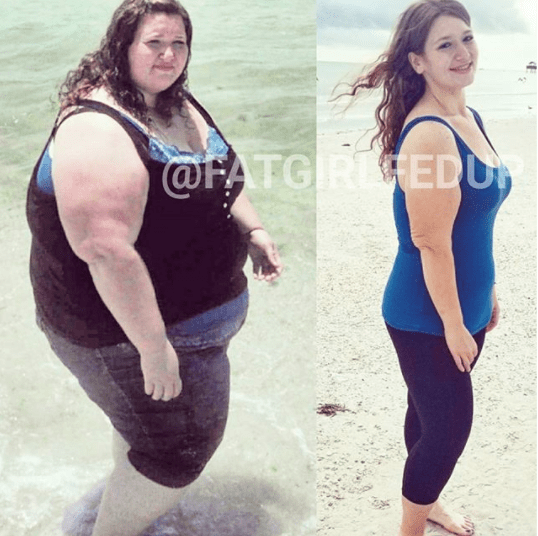
Photo Credit: Instagram,fatgirlfedup
Lexi said, “We didn’t have a meal plan, surgery, personal trainer, but what we did have was each other and the motivation within to work hard every single day. We wanted to be parents in the future and live a longer life together.” Lexi and Danny recreated some of their old photos to show just how dramatic both of their transformations have been.

Photo Credit: Instagram,fatgirlfedup

Photo Credit: Instagram,fatgirlfedup
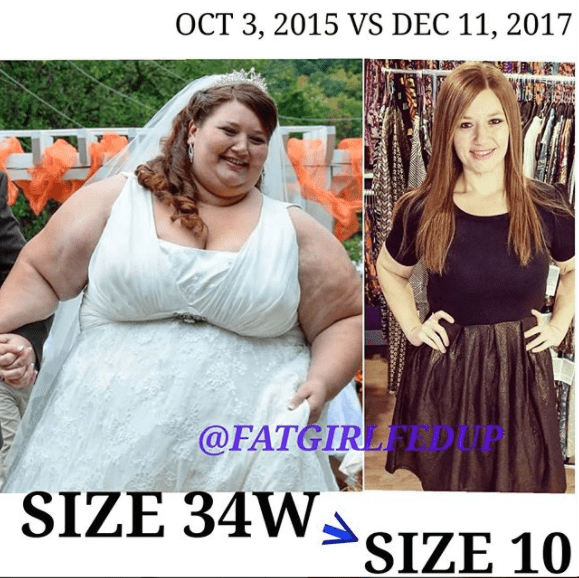
Photo Credit: Instagram,fatgirlfedup
Lexi said, “Together we started meal prepping, drinking water instead of soda, quit watching television and started moving more, going to the gym just 30 minutes five times a week, focusing on our future every day, setting goals – and day by day the weight took care of its self.” Lexi used to weigh nearly 500 pounds, and now she weighs just 182.

Photo Credit: Instagram,fatgirlfedup
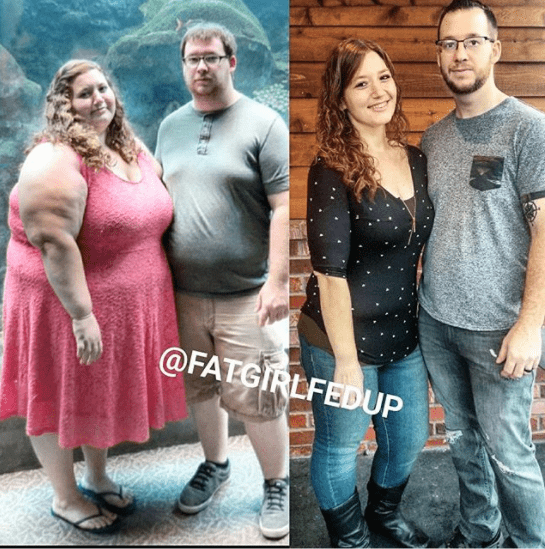
Photo Credit: Instagram,fatgirlfedup
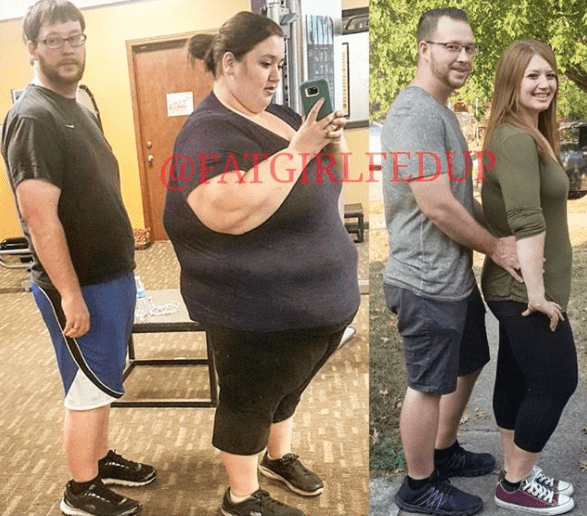
Photo Credit: Instagram,fatgirlfedup

Photo Credit: Instagram,fatgirlfedup
Great work, Lexi and Danny! This is an inspiring story about how we can all reach our goals, if we stick with them and work hard.
The post After Losing 400 lbs Together, This Couple Recreated Their Old Photos to Celebrate appeared first on UberFacts.
There’s A Reason Some People Stay Skinny Despite Eating Like a Horse
Everybody always has that one friend – you know, the one who can take down a whole pizza and some beer all by themselves, then turn around and ask for dessert… all while maintaining their seemingly impossibly svelte physique. Oh, and they don’t work out either. Nope, they just go around eating whatever they like with no consequences at all. No pounds piling on, no ours of atonement at the gym. Must be nice.
Well, you’ll be interested in the results of this study, which claims to have the answers…though they’re probably not going to make you feel any better.
Basically, your body type depends on the genes you were born with far more than on any diet or exercise routine you employ as an adult.
Photo Credit: Pixabay
The new research aimed to pinpoint the genetic architecture of skinniness and severe obesity, and their findings, published in PLOS Genetics, could help explain why some people find staying thin easy while others have the opposite experience.
That is not to say that environmental factors like high-calorie diets or sedentary lifestyles don’t play any role, but obesity, as many people have realized, is more complex than eating too much fast food.
The study leader, Professor Sadaf Farooqi, issued this statement:
“This research shows for the first time that healthy thin people are generally thin because they have a lower burden of genes that increase a person’s chances of being overweight and not because they are morally superior, as some people like to suggest. It’s easy to rush to judgement and criticize people for their weight, but the science shows that things are far more complex. We have far less control over our weight than we might wish to think.”
Photo Credit: Pixabay
No one tell the billion-dollar diet industry that they’re bunk.
Or wait. Maybe we should.
This study included the DNA of around 14,000 people – 1622 thin people, 1985 obese people, and 10433 people with average body mass, and identified the genes linked to slimmer people. Adds researcher Dr. Ines Barroso,
“As anticipated, we found that obese people had a higher genetic risk score than normal weight people, which contributes to their risk of being overweight. The genetic dice are loaded against them.”
The research supports previous studies, which have suggested that though a number of variables dictate weight gain (or loss), your natural metabolism has a lot to do with how you look.
Photo Credit: Pixabay
With obesity posing a huge health risk, particularly in Western countries like the US and the UK, these researchers hope their findings will help doctors and laypeople alike gain a more attenuated understanding of what causes it – and how we can adjust our weight-loss strategies accordingly.
The study might also lead to different approaches in the future, as our science continues to advance. Professor Farooqi suggests,
“If we can find the genes that prevent them from putting on weight, we may be able to target those genes to find new weight loss strategies and help people who do not have this advantage.”
Which is to say, you might be able to find a diet and exercise routine that compliment your genetic makeup, therefore not applying unrealistic standards and goals in each specific case.
We can dream, anyway.
The post There’s A Reason Some People Stay Skinny Despite Eating Like a Horse appeared first on UberFacts.
Exercise does not actually…
Exercise does not actually contribute much to weight loss. Simply eating better has a significantly bigger impact, even without much exercise.
Man Looks Like a Disney Prince After Losing 70 Lbs
A lot of us struggle with our weight, and it’s so easy to get discouraged along that journey. I find, however, that it always helps to see someone else whose hard work and persistence paid off with an incredible transformation!
For 26-year-old Connecticut resident Jeffrey Kendall, the inspiration to get fit came while he was taking care of his mother.

Photo Credit: Jeffrey Kendall
Jeff’s mom had suffered a brain aneurysm on July 4, 2015. In an interview with Love What Matters, he explained, “She was in a coma and rehab hospitals for 7 months until they deemed she had plateaued and was to be released since insurance would no longer cover her.”
“I was an overweight youth, I was bullied growing up. I’ve lived my life with body-image and confidence issues.”

Photo Credit: Jeffrey Kendall
Seeing everything his mother was going through gave Jeff a lot of perspective on “a world of self-pity and pain.” Coincidentally, a close friend who’d just gone through a painful breakup was starting an exercise regimen as a way to feel better and needed a workout buddy.
They started out with a light barbell workout and some daily pushups.

Photo Credit: Jeffrey Kendall
Eventually, he started waking up earlier and going for walks. As he got fitter, that turned into jogs and sprints. After nearly two years of dedication to his healthy lifestyle, Jeff lost 70 pounds!
Talk about a transformation! That is one handsome fella.

Photo Credit: Instagram, jeffk8991
Not that he wasn’t already a pretty handsome guy, but he’s got model good looks now.

Photo Credit: Instagram, jeffk8991
Selfie game is strong too!

Photo Credit: Instagram, jeffk8991
Just the hair alone is pure magnificence…

Photo Credit: Instagram, jeffk8991
… But then you get tickets to the gun show.

Photo Credit: jeffk8991

Photo Credit: Reddit, Apolecia
Naturally, it wasn’t long before the comparisons to Disney princes started rolling in, especially Prince Adam from Beauty and the Beast.

Photo Credit: Reddit, Apolecia

Photo Credit: Instagram, jeffk8991
Since first sharing his progress on Reddit, Jeff says he’s been overwhelmed by the positive response and attention he’s received.

Photo Credit: Instagram, jeffk8991
“I could barely sleep that night, it was amazing. The comments were all so uplifting and inspiring.”

Photo Credit: Instagram, jeffk8991

Photo Credit: Instagram, jeffk8991
Many of the commenters online couldn’t stop fawning over his hair, and suggested he star in shampoo ads.

Photo Credit: Anya Hall

Photo Credit: Amanda Morgan

Photo Credit: Pepper Rainbow

Photo Credit: Ryann Farley
Perhaps what makes Jeff even more beautiful as a person is his good heart. He stepped up to take care of his ailing mother when she was ill, a decision that’s not always easy for someone in their 20s to make. Here’s hoping he has every success in life, because he definitely deserves it.
If you liked this transformation story, you may also enjoy:
10 Incredible Weight Loss Transformations That Prove You Can Get Fit in 2018
The post Man Looks Like a Disney Prince After Losing 70 Lbs appeared first on UberFacts.







 Graeme Tomlinson
Graeme Tomlinson – – #thefitnesschef #mealprep #junkfood #fastfood #cheapfood #obesity #diet #eatwell #healthyfood #nutrients #salad #fruit #nutritious #losefat #lunchbox #worklunch
– – #thefitnesschef #mealprep #junkfood #fastfood #cheapfood #obesity #diet #eatwell #healthyfood #nutrients #salad #fruit #nutritious #losefat #lunchbox #worklunch . – – Reg burger: Mix 150g 5% beef, 1tsp garlic powder, 1tsp dried herbs. Oven cook for 20 mins. Add to brioche bun with 2 cooked bacon medallions, 1 fried egg, 15g low fat cheese, 1 tsp ketchup & spinach. – – #thefitnesschef #keto #diet #ketodiet #ketoweightloss #fatloss #burger #nutritioncoach #eatsmart #carbsarelife #balanceddiet #fatlossdiet #fatlosshelp #losefat #fatlosstips
. – – Reg burger: Mix 150g 5% beef, 1tsp garlic powder, 1tsp dried herbs. Oven cook for 20 mins. Add to brioche bun with 2 cooked bacon medallions, 1 fried egg, 15g low fat cheese, 1 tsp ketchup & spinach. – – #thefitnesschef #keto #diet #ketodiet #ketoweightloss #fatloss #burger #nutritioncoach #eatsmart #carbsarelife #balanceddiet #fatlossdiet #fatlosshelp #losefat #fatlosstips
